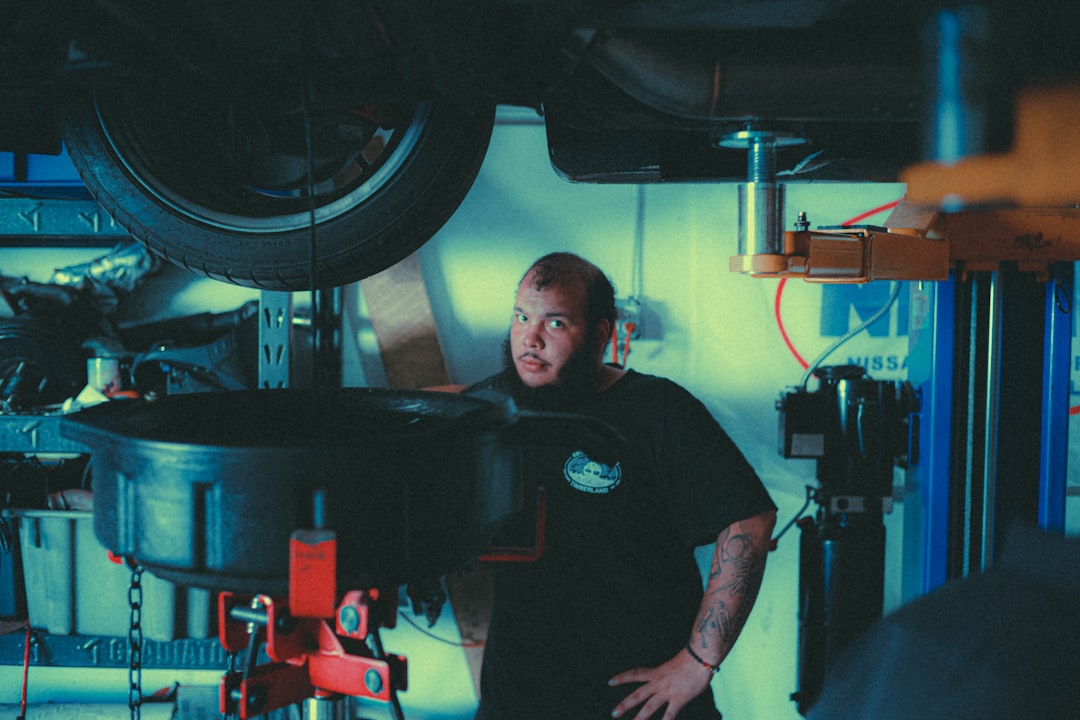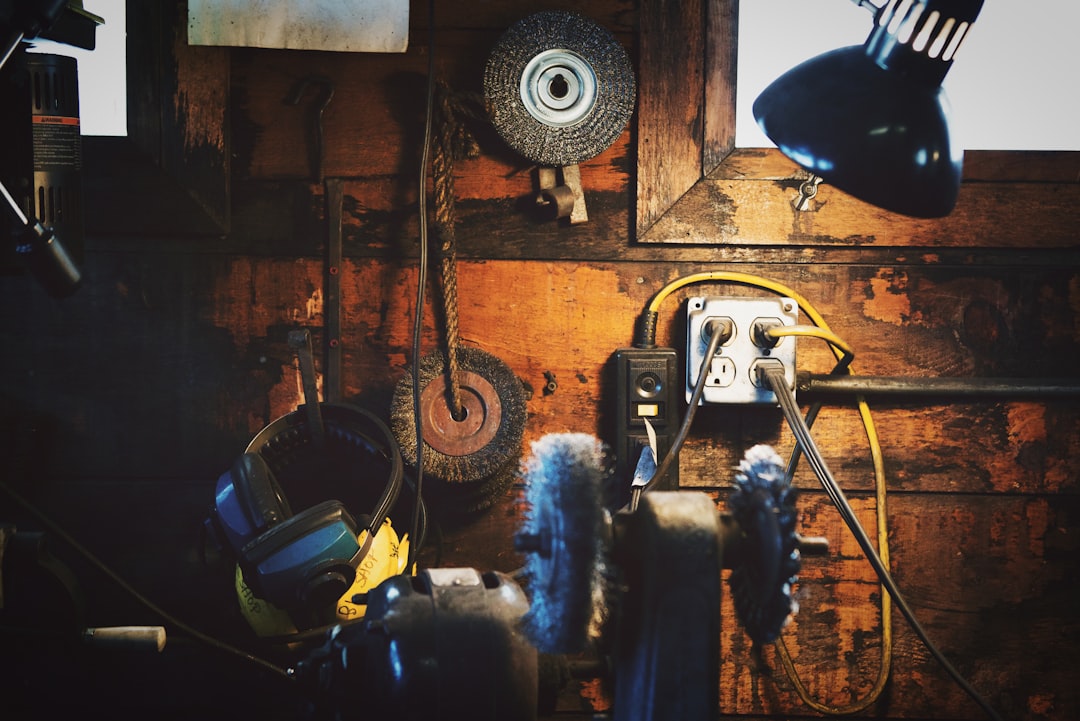

Engage prospects with a scan and streamline customer engagement with FREE QR code marketing tools by Sona – no strings attached!
Create a Free QR CodeFree consultation

No commitment

Engage prospects with a scan and streamline customer engagement with FREE QR code marketing tools by Sona – no strings attached!
Create a Free QR CodeFree consultation

No commitment
Furnace repair services face unique challenges in bridging the gap between physical appointments and digital workflows, as homeowners and property managers demand faster, more seamless solutions to heating system breakdowns. Lost bookings and missed follow-up reminders often result from a reliance on manual paperwork and outdated channels, creating friction that slows business growth and frustrates customers. Hidden inefficiencies such as incomplete lead tracking or fragmented appointment data further complicate service delivery in an industry rapidly embracing technology for greater efficiency and customer satisfaction.
In today’s digitally driven market, QR codes are transforming how furnace repair businesses engage with both customers and field technicians. Despite their promise, many providers struggle with missed high-value prospects and limited insight into which interactions drive true revenue, a challenge compounded by analog workflows and generic marketing tactics. By integrating QR codes into service workflows, companies can expedite diagnostics, streamline troubleshooting, reveal engagement signals, and boost personalization, helping technicians deliver a higher standard of HVAC repair with minimal friction. See HVAC QR strategies.
This guide explores how QR codes can be deployed at the heart of furnace repair services to unlock new marketing opportunities, improve operational efficiency, and deliver high-value field support. With proven use cases and strategies tailored for B2B marketers and operational leaders in HVAC repair, learn how connecting offline and digital experiences can elevate your customer journey and bottom-line results.

For many HVAC providers, the bottlenecks are clear: paper intake forms get misplaced, technician notes never make it into the CRM, and urgent calls arrive with little context. QR codes act as a simple, scalable bridge between fieldwork and digital systems. When a technician or customer scans a code, it can trigger a streamlined flow for scheduling, documentation, payments, safety checks, and more. The immediate result is fewer manual steps, better data hygiene, and faster time to resolution.
Replace outdated analog processes with digital interactions that meet customers where they are. A homeowner can scan a door hanger to rebook, a facility manager can scan a unit label to open an asset’s maintenance history, and a technician can scan a van decal to access the latest safety protocols. Every scan creates a measurable digital signal that you can use to route leads, prioritize jobs, and tailor support. Platforms such as Sona QR centralize these activities so teams can manage content, track performance, and sync insights to the CRM without extra work.
Integrated QR platforms unify scan activity and enrichment into your CRM for a consolidated view of each customer’s engagement. Instead of relying on memory or manual note-taking, you get a real-time record tied to each asset, location, and job. That transparency supports better staffing decisions, clearer ROI, and a more responsive customer experience.

Furnace repair is inherently physical: technicians diagnose equipment on-site, customers discover providers through trucks or mailers, and property teams track units across buildings. The challenge is converting those moments into measurable digital actions. QR codes close that gap by making every card, label, or vehicle a portal to booking, documentation, or education. When deployed strategically, they reveal what actually influences engagement and revenue, so you can double down on what works.
They also remove friction for customers who want fast answers without navigating a website or calling during business hours. Scans can pre-fill a form, place a callback request for a specific time window, or open a troubleshooting checklist to reduce downtime. Dynamic QR codes, managed in a platform like Sona QR, can be updated instantly as promotions, regulatory requirements, or seasonal messages change, so printed assets stay useful year-round.
By matching QR codes to high-intent moments across your footprint, you reduce wasted spend and shorten the distance between interest and service delivery.

Not all QR codes serve the same purpose. Furnace repair teams should mix formats based on the task at hand: servicing equipment, booking appointments, updating records, or collecting feedback. The goal is to make the next best step obvious and easy for every audience, from homeowners to facility managers to technicians.
Dynamic QR codes are especially valuable in this industry. They support A/B testing, destination changes, and performance tracking at scale, which is ideal when your fleet, materials, and assets are deployed across multiple neighborhoods or buildings. Static codes still have a place for evergreen items such as installation manuals or fixed safety checklists.
Choosing the right format depends on the user’s environment and intent. For field labels and knowledge access, static codes may suffice. For marketing, scheduling, and analytics, dynamic codes managed in Sona QR provide the control and visibility needed to optimize performance.

Growth in furnace repair often hinges on engaging prospects at the exact moment a need arises. Since many of those moments happen offline, QR codes can turn passive exposure into measurable outcomes. The key is to place codes where customers already look and to use clear calls to action aligned with their context, such as “Scan for emergency booking” or “Scan for winter tune-up pricing.”
In addition to net-new leads, QR codes protect revenue by reducing no-shows, accelerating rebooking, and capturing reviews when sentiment is highest. When linked to a CRM and automation stack, scans can also drive upsells at the right time, such as promoting air quality add-ons during allergy season or extended warranties near the end of coverage.
Deploying codes at the intersection of fieldwork and customer experience helps you recover otherwise anonymous offline interest while building a richer, more measurable marketing pipeline.

Well-chosen QR use cases remove guesswork from field operations and eliminate blind spots in customer engagement. When each scan maps to a clear action and a trackable endpoint, teams deliver faster service and marketing becomes more precise.
Focus on use cases that match the phases of your customer lifecycle: initial discovery, urgent need, diagnostic assistance, post-visit follow-up, and long-term retention. The examples below can be deployed singly or as a connected series.
By aligning each code with a specific moment and next step, you can convert attention into action while collecting the data needed to improve staffing, stocking, and messaging.
Every scan is a data point that reveals interest, urgency, and context. Over time, a network of QR codes across your vans, invoices, equipment labels, and door hangers becomes a powerful segmentation engine. With proper tags and integrations, these signals feed your CRM and ad platforms to drive personalized follow-up at scale with intent-driven retargeting.
Start by assigning unique codes to distinct journey stages and actions. Then define how each scan should be tagged and routed. For example, a code for “Emergency Booking” might alert dispatch immediately, add the contact to an “Urgent” segment, and suppress long-form marketing until the issue is resolved. Conversely, a “Maintenance Plan Info” scan can trigger educational content and a limited-time offer.
By retargeting based on real behavior rather than assumptions, you spend less to convert more. You also reduce lead fatigue by matching message and timing to the exact need signaled by each scan.
A modern furnace repair marketing strategy must connect offline interactions with digital systems. QR codes act as the connective tissue across print, field, and media channels, turning static assets into dynamic entry points. When centralized in a platform such as Sona QR, these codes give you a single source of truth for performance and attribution across channels. Use this QR marketing guide.
The key is consistency. Use a clear visual system and concise CTAs so customers know scanning will be fast and useful. Align each QR destination with the channel’s context and constraints, such as big, high-contrast codes for vehicles and short links to mobile-first landing pages for invoices.
As you integrate codes across channels, you will uncover which placements convert best, how messaging should vary by audience, and where to increase or dial back investment. This continuous feedback loop turns your entire marketing mix into a measurable, optimizable system.
Successful QR programs are planned with the end in mind: the action you want the scanner to take and the data you want to capture. Before printing a single code, align stakeholders on goals, audiences, placements, and measurement. Then design for scannability and clarity so customers and technicians know exactly what they will get.
To help you operationalize quickly, the following steps outline a repeatable process that scales from a single use case to a full-funnel deployment. Each step includes practical guidance tailored to furnace repair environments along with ideas for testing and optimization.
Furnace repair teams often invest in print, vehicles, and events without a clear way to tie spend to results. QR codes solve that problem by turning every offline impression into a trackable interaction. When paired with identity resolution and CRM sync, you can see which codes lead to booked jobs, maintenance plan sign-ups, or high-value upsells. Read about offline attribution.
Strong analytics begin with consistent tagging and naming. Label codes by placement and campaign so dashboards tell a clear story: which trucks drive the most emergency bookings, which mailers convert by zip code, and which unit labels are scanned most often during shoulder seasons. Over time, these patterns inform staffing, inventory, and marketing strategy.
With Sona QR for capture and Sona.com for attribution, you can move beyond vanity metrics and prove the impact of every QR-enabled touchpoint on pipeline and profit.
Scaling QR across your business requires more than printing codes. Success depends on clear education, smart placements, and automation that turns signals into action. Small refinements in messaging and design often produce significant gains in scan rates and conversions.
Prioritize the channels and assets you already use most, then iterate quickly. For many providers, fleets, door hangers, invoices, and equipment labels represent the biggest opportunities. Measure each, experiment with CTAs, and retire underperformers.
Bringing these practices together with CRM automation turns your QR program into a reliable engine for retention, reviews, and revenue expansion.
QR codes are more than shortcuts. They are a strategy for connecting physical field service to digital systems in ways that reduce friction for customers and increase confidence for operators. In furnace repair, where urgency and trust matter, QR-enabled workflows help teams respond faster, document better, and learn what moves the needle.
With intentional design and the right platform, every scan becomes a signal. You can capture demand at the source, route it to the right team, and follow it to a measurable outcome. Sona QR gives you the tools to create, manage, and track codes across your fleet and materials, while Sona.com ties those engagements to pipeline and revenue. Start creating QR codes for free.
QR codes have revolutionized furnace repair services by turning routine maintenance and troubleshooting into efficient, data-driven interactions. From enabling technicians to access instant equipment histories to simplifying customer scheduling and follow-ups, QR codes enhance every touchpoint—boosting technician productivity and elevating the customer experience. Imagine a world where every scan unlocks vital repair details, streamlines service, and builds trust with clients.
With Sona QR, you gain the power to create dynamic, trackable QR codes that can be updated instantly without reprinting, ensuring your campaigns and service tools stay current and effective. Connect each scan directly to actionable insights, helping your team respond faster and your business grow smarter. Start for free with Sona QR today and transform every QR code scan into a seamless service success.
Look for furnace repair services that use digital tools like QR codes for faster scheduling, better communication, and reliable customer engagement to ensure efficient and trustworthy service.
Common issues include equipment diagnostics and maintenance delays, which can be resolved faster using QR codes that provide technicians with manuals, troubleshooting guides, and real-time access to service histories.
The article does not specify furnace repair costs.
While the article does not list specific signs, urgent needs like heating system breakdowns often require immediate booking, which can be facilitated via QR code-enabled emergency scheduling.
QR codes streamline scheduling, diagnostics, documentation, payments, and follow-ups by connecting physical service points to digital workflows, reducing manual errors and speeding up repairs.
Technicians gain instant access to manuals, parts lists, safety protocols, and training materials through QR codes, enabling faster troubleshooting, better accuracy, and improved service quality.
You can schedule an appointment by scanning QR codes found on service vans, mailers, or invoices that link directly to booking portals or 24-7 scheduling forms.
Technicians can access the latest safety protocols instantly by scanning QR codes on van decals or equipment labels, ensuring they follow current safety standards during repairs.
The article suggests using QR-coded tags on thermostats or units to receive seasonal maintenance reminders that help maintain regular upkeep and reduce repair needs.
The latest technologies include QR codes integrated with CRM platforms for real-time tracking, dynamic content updates, automated follow-ups, and data-driven marketing and operational insights.
Use Sona QR's trackable codes to improve customer acquisition and engagement today.
Create Your FREE Trackable QR Code in SecondsJoin results-focused teams combining Sona Platform automation with advanced Google Ads strategies to scale lead generation

Connect your existing CRM

Free Account Enrichment

No setup fees
No commitment required

Free consultation

Get a custom Google Ads roadmap for your business






Launch campaigns that generate qualified leads in 30 days or less.
